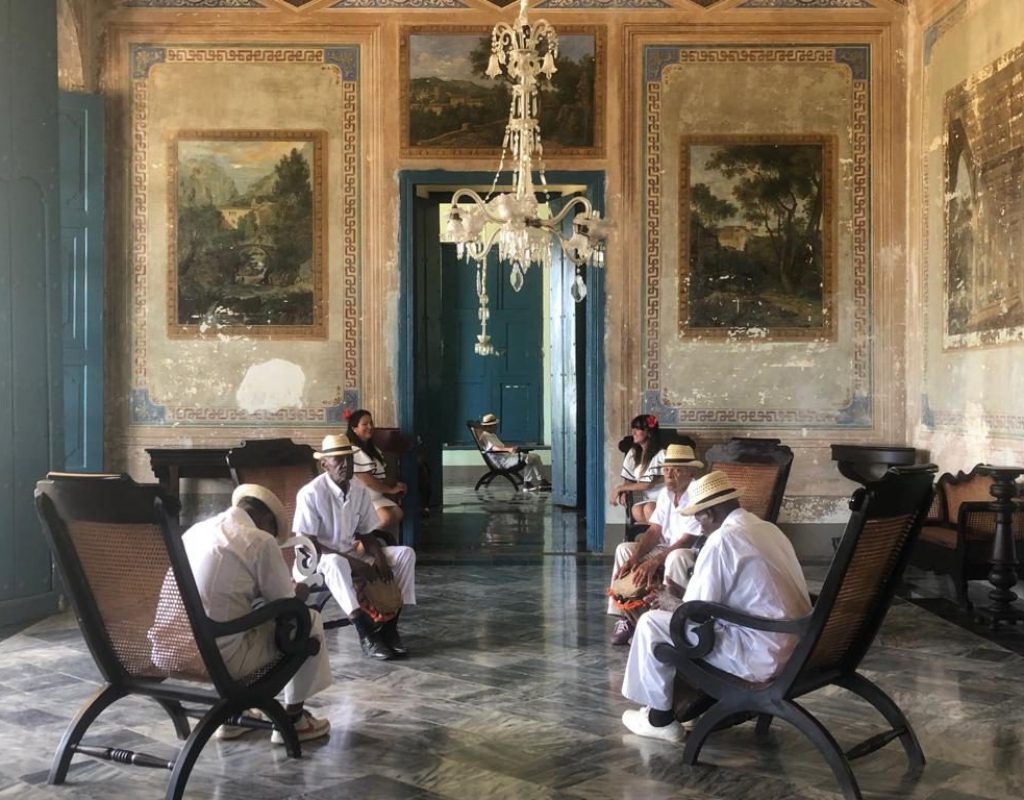
Sounds of Labor
Curator
Venue
DETALLES DEL PROYECTO
As a sonata in its different movements, El sonido de la labor integrates into its structure four pieces that could function with relative autonomy but reach their highest poetic-symbolic dimension in the condition of a single work. Candiani insists on that particular orientation of her artistic work, which emerges as a result of successful research around the possibilities of encounter and interrelationship between the visual arts and the sonic elements associated with the universe of labor.
In the same way that other elements have motivated and materialized previous works from the artist as the sound of the grana cochinilla, the vendor’s loudspeaker or the magic and expertise deployed for the conversion of a loom into a musical instrument. This time the artist was inspired by the chants intoned by the slaves in the cane plantations of the region of Trinidad. The office of cigar reader that was proclaimed Cultural Patrimony of the Cuban Nation and the discreet rattle of the bolillos used by our artisans in the manual tissue, on this occasion, partially replaced by pencils.
Considered in all its extension, this project reveals multiple purposes and meanings. It grants distinction to the traditions of a territory in its particularities and moves them towards the domains of the contemporary, either through collaborative and interdisciplinary practices, the insertion of the performative spirit in its dynamics, or its reworking in the audiovisual language would not suffice to grant the degree of aesthetic and intellectual forcefulness that this work achieves. Candiani can ponder the tradition and at the same time disturbs it, as well as contaminates it with themes and reflections of current interest. Thus, for example, it captures in the most delicate lace contents of the feminist agenda related to care chains and migrant women and nourishes with texts associated with problems of the feminine condition. The literary repertoire was chosen to be heard through the voice of a reader to an audience of seamstresses (not for torcedores), while they work in her workshop.
In the same way, and keeping the sound of the work as a point of connection, she turns her gaze towards the history of the Island in the colonial period and insists on recalling the songs coming from the barracks and cane fields. Tunes that were once heard where the blood and sweat of the slaves produced the substantial surplus value that strengthened the power of the Cuban “sacarocracy.” They were determined to raise “castles of sugar on the burnt floors of Cuba,” as expressed by the Uruguayan writer Eduardo Galeano.
This introduction is a prior note to the presentation of this work. I appeal to the sensitivity and essential support of all involved so that the sound of labor comes to be heard in all its dimensions.
So be it!
Ibis Hernández Abascal
Curator. XII Havana Biennial
https://taniacandiani.com/wp-content/uploads/2021/11/El-sonido-de-la-labor.-CANDIANI.-ESP.pdf
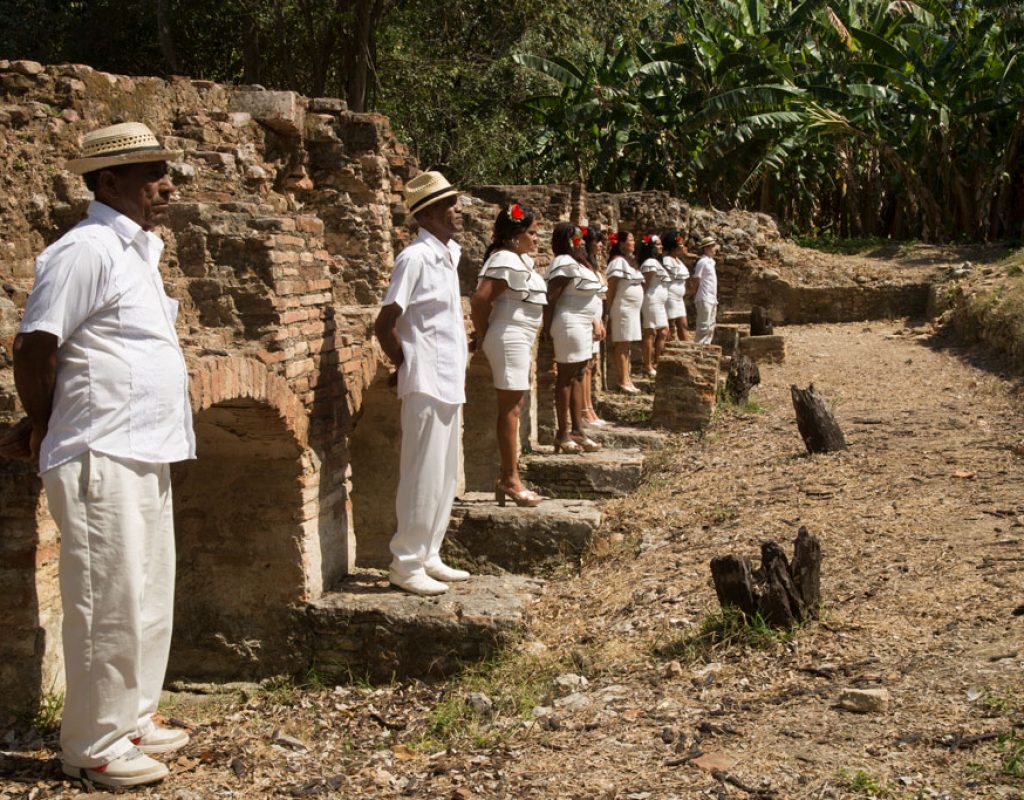
From The Sound of Labor. Work Songs
Data sheet
Credits
DETALLES DEL PROYECTO
The trinitarian tunes are a unique modality within the complex Afro-Cuban musical manifestations exclusive of the city of Trinidad, in the province of Sancti Spiritu. They are the product of the encounter between the guajira tradition, the musical practices derived from the Bantú and the melodic twirls coming from Spain. Between the stanzas and melodies that are preserved through the veteran bearers, some are identified as work songs in the cane fields. It is precisely this repertoire on which this chapter of the project is based, consisting of a video installation and a live action.
Filmed in the Valle de los ingenios with the voice as the protagonist, this work travels through the landscapes that were once sugarcane plantations sustained by the work of the slaves. The Watchtower, the ruins of the barracks, the rancher’s farm are staged for this sound action that appeals to memory.
Data:
Del Sonido de la labor. Cantos de trabajo / From the Sound of labor. Work singing. 2019. Hacienda Manaca Iznaga Tower, Sancti Spiritu, Cuba.
During the live action, the Tonadas Trinitarias choir group in collaboration with a lyric chorus, performed five tunes in the lobby of the Galbán Lobo Student Residence, which building walls are covered by paintings that refer to the process of cultivation, extraction, and commercialization of sugarcane. The first tune, sung at the door of the house, begins by saying, “I ask your mercy to let me sing, to let me sing, to let me sing … “
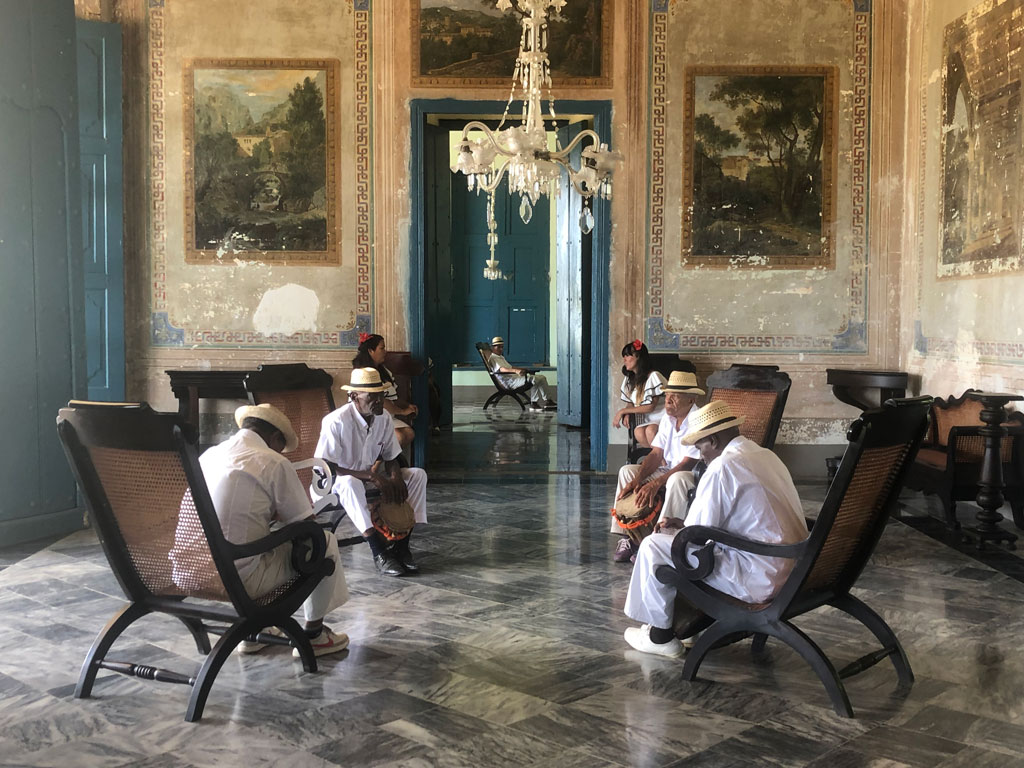
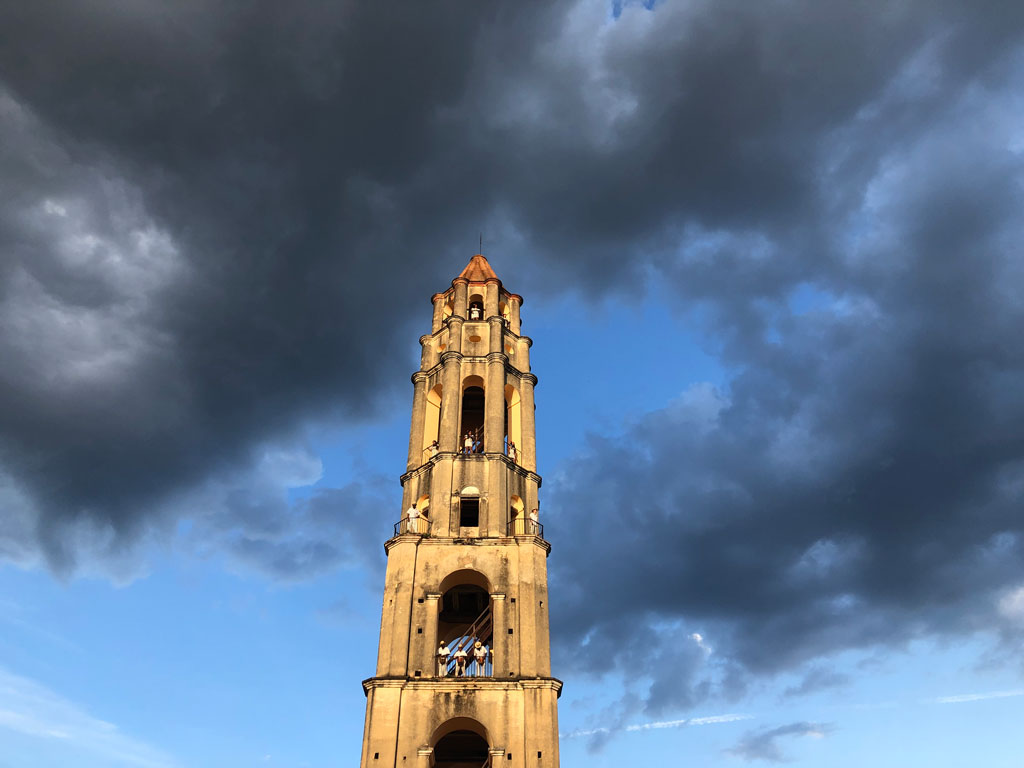
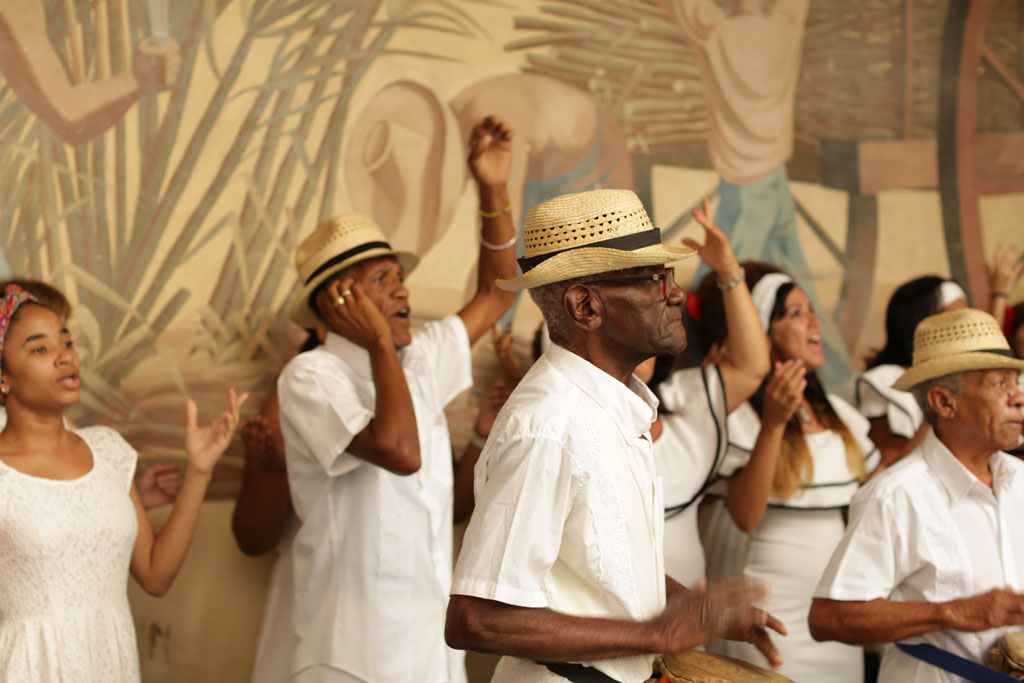
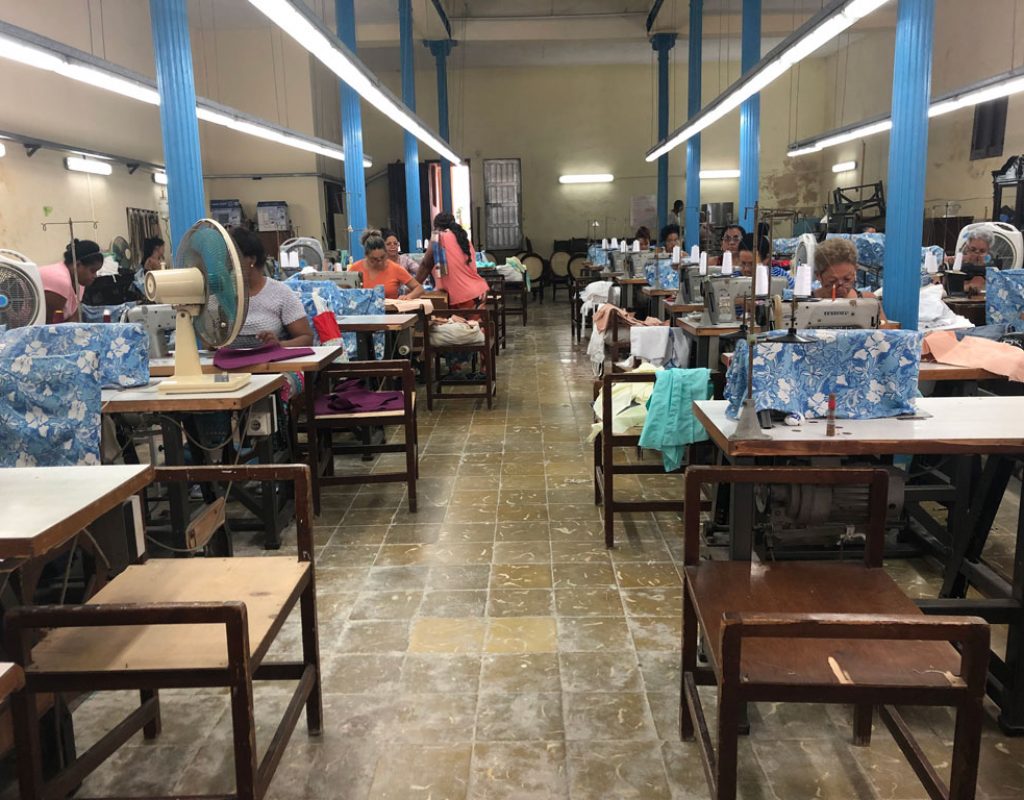
From The Sound of Labor. The Reader
Data sheet
Credits
DETALLES DEL PROYECTO
The reading in the tobacco shops was introduced in Havana in the middle of the 19th century. This initiative took the reading to the factories to alleviate the long and tedious days of the cigar rollers. It turned out that this knowledge was leaving an ideological deposit and turned the tobacco sector into a seasoned collective and liable to the ideas of independence.
This work starts with the idea of transplanting the trade of the tobacco shop reader to another work context: the garment factory.
Located in the heart of downtown Havana in a street-level mansion, the Quitrín artisan development center, conceived from the beginning as a community project to train and rescue the traditional arts of clothing, was founded by Vilma Espin who undertook great battles for the emancipation of women. It is in this place that every day in the workshop, a selection of feminist texts and literature written by women were read aloud to accompany the work of the seamstresses.
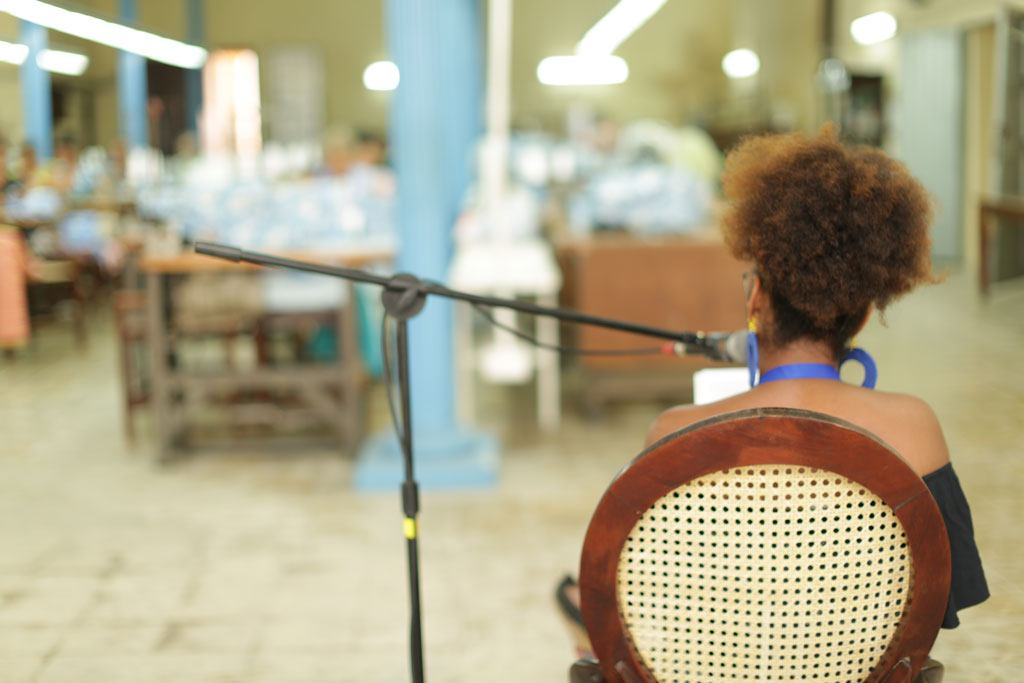
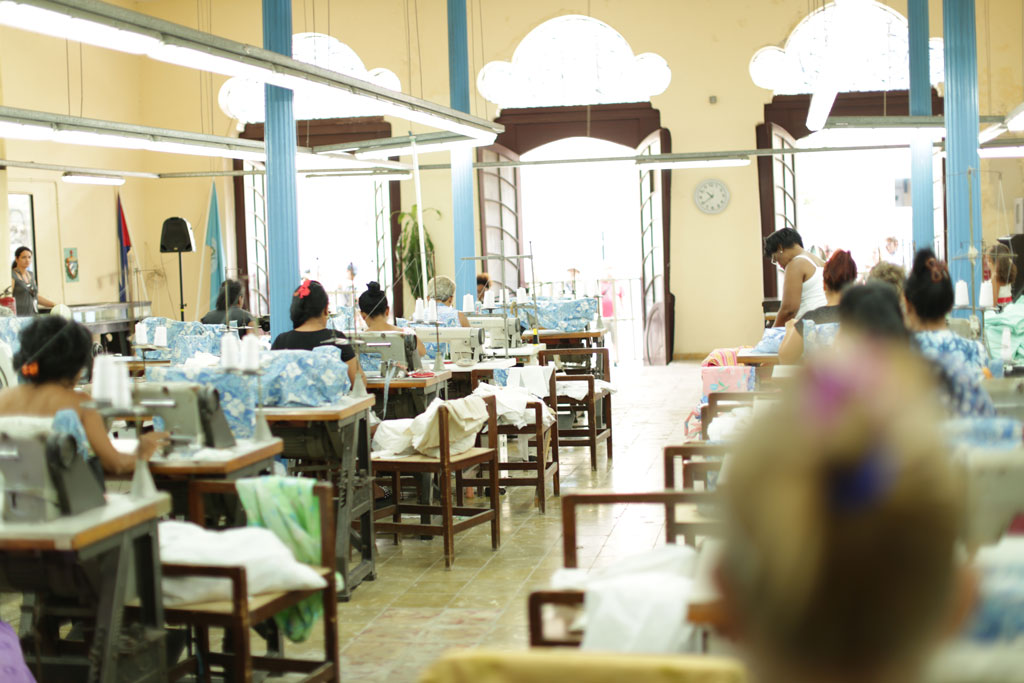
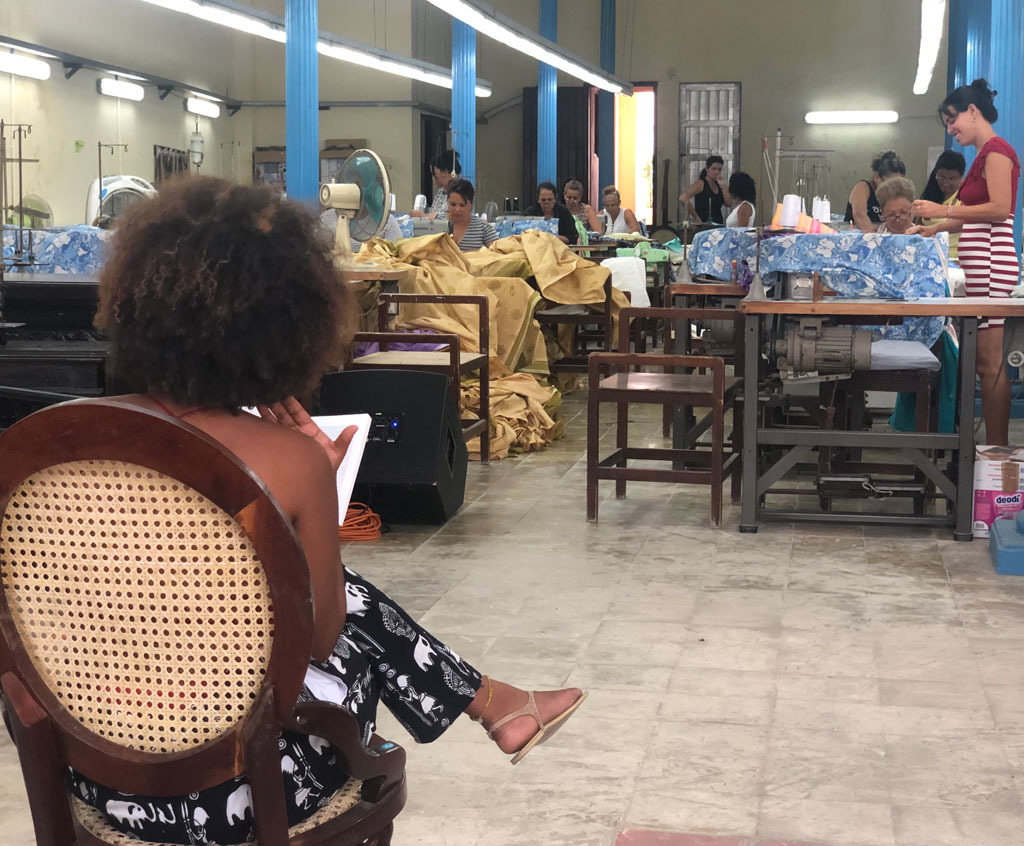
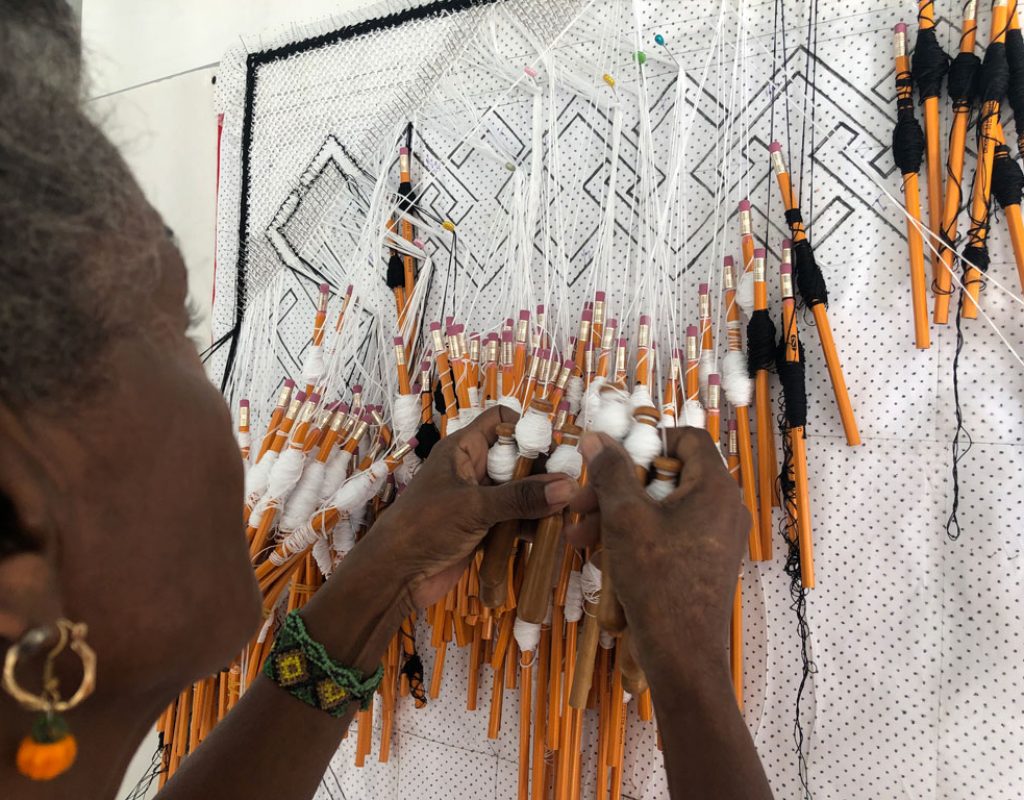
From The Sound of Labor. One never sees what has been done but what is to be done
Data Sheet
Credits
DETALLES DEL PROYECTO
The encaje de bolillos (bobbin lace) is a technique of textile lace that consists of interweaving threads that are initially wrapped in bobbins to handle them better. As the work progresses, the fabric is held by pins stuck in a pad, which is called mundillo. The pounding produced by the bobbins in the weaving process creates a constant sound, rhythm, and precision. It had its climax between the 16th and 18th centuries. Keeping this tradition alive is a task of resistance as nowadays is at risk of disappearing since the mechanization of textile work, leaving artisans almost unemployed.
In this piece of the process, the weaver Adriana Martínez Silva will work on a large-scale lace with the bolillo system embroidering a phrase that alludes to another type of work related to care: “The grandmother who takes care of the mother’s son who migrated to take care of the mother’s daughter who went to work, is tired.”
The piece makes visible the process, the meticulous invoice, and it’s sound as a poetic action in construction.
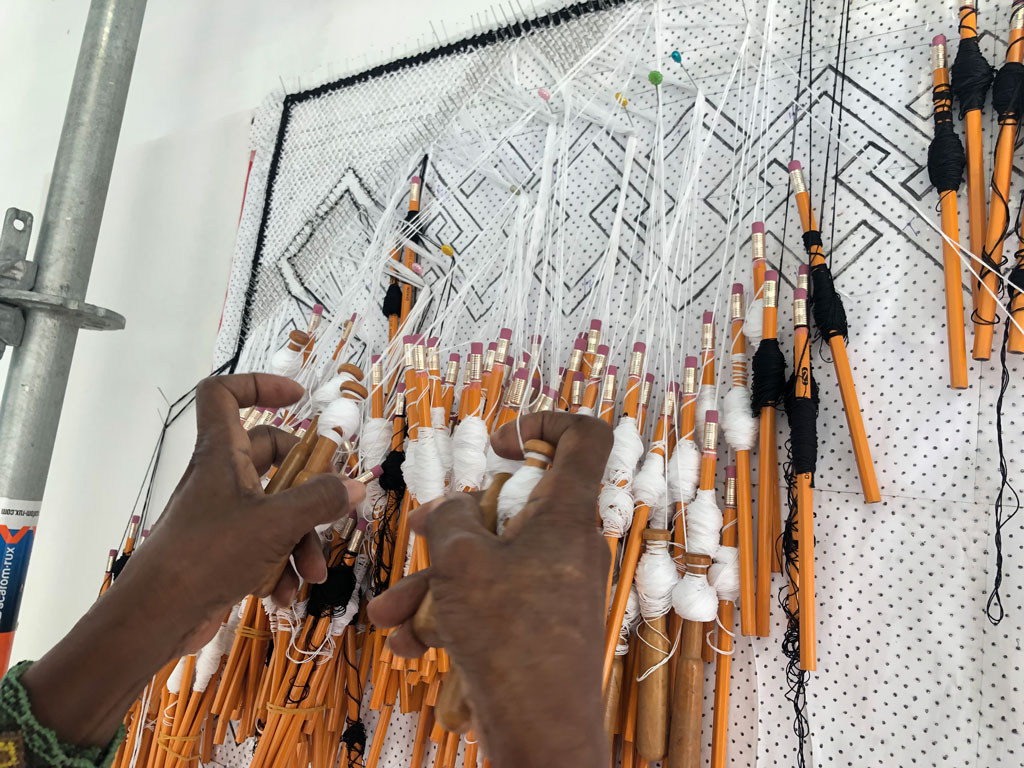
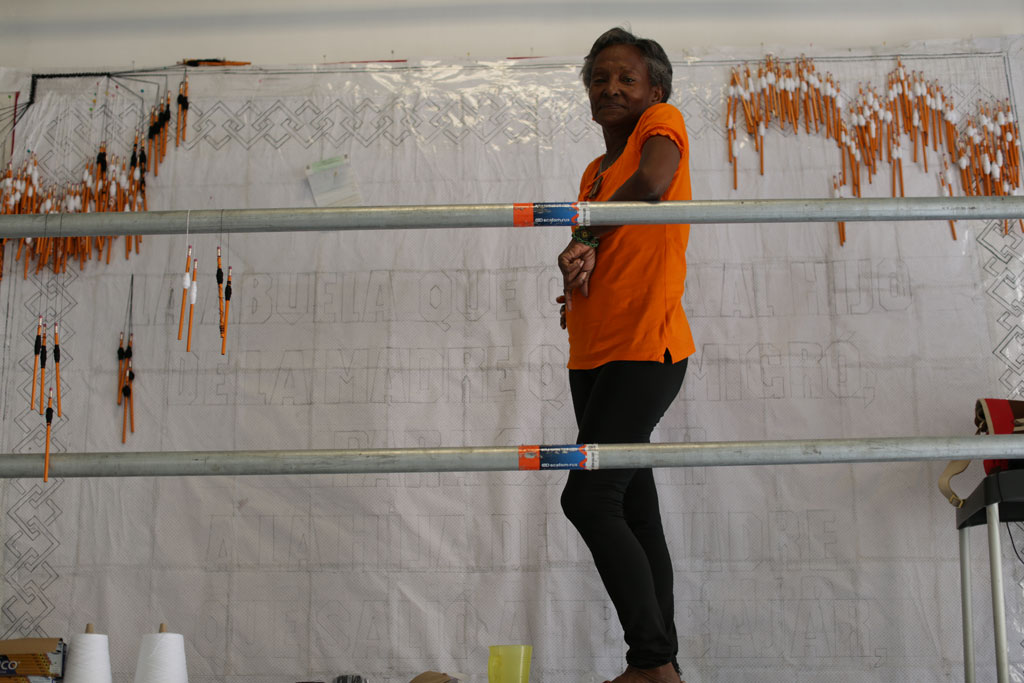
DETALLES DEL PROYECTO
DETALLES DEL PROYECTO
DETALLES DEL PROYECTO